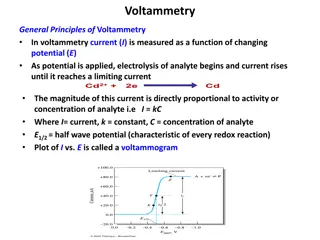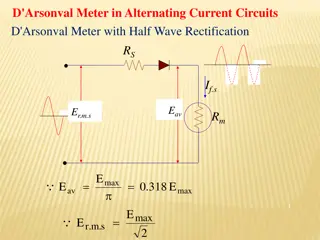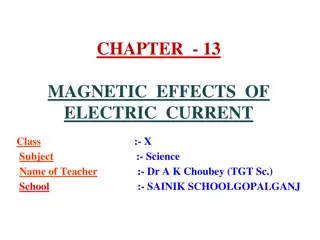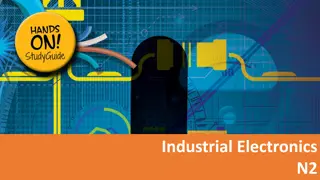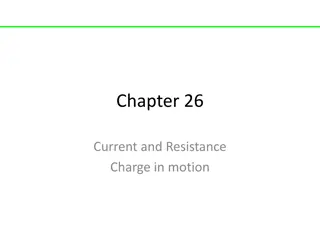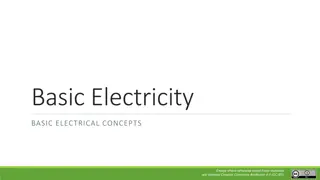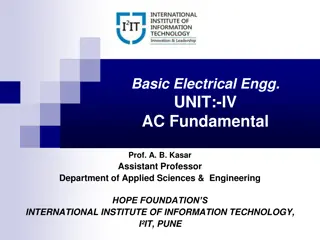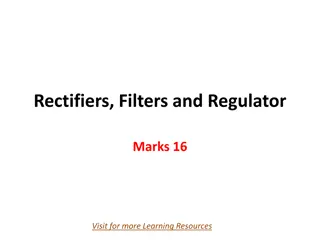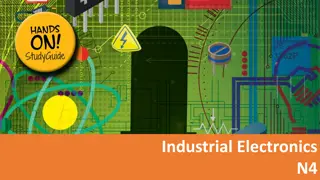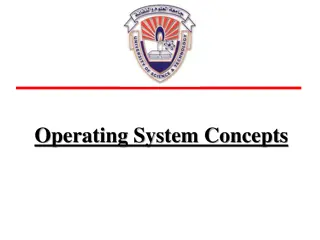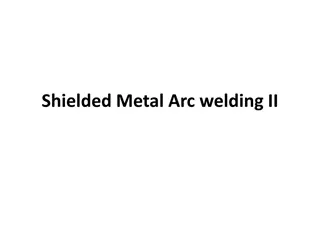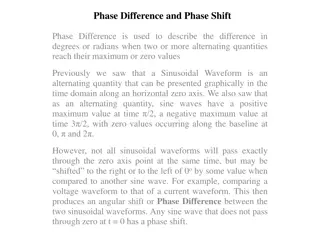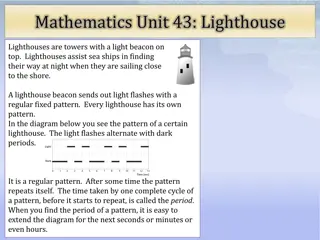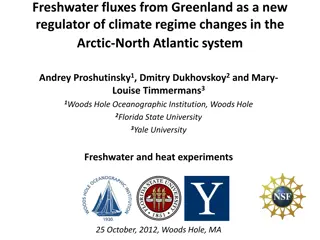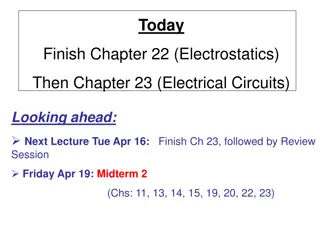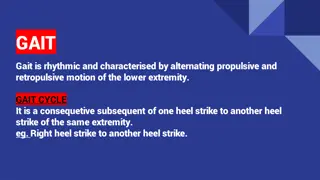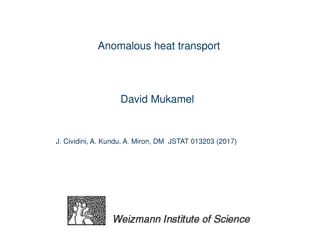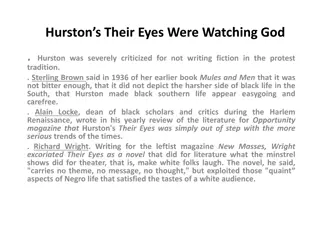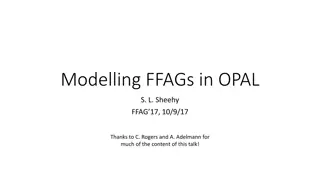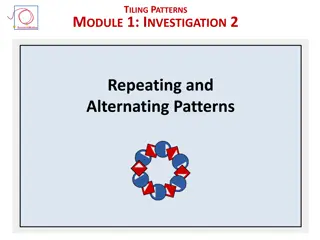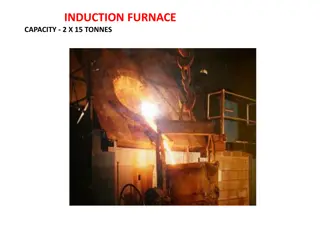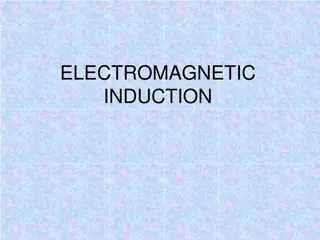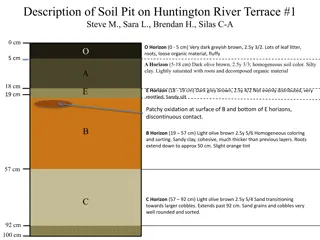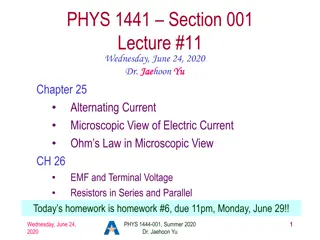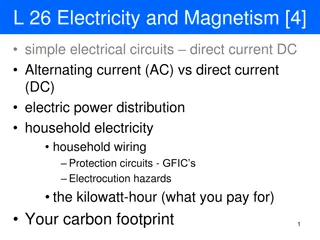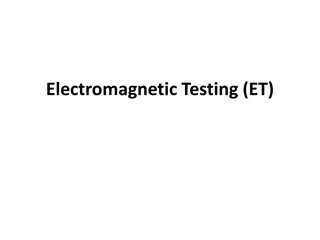Understanding Voltammetry: Principles and Applications
In voltammetry, current is measured as a function of changing potential. The magnitude of current is directly proportional to the activity or concentration of the analyte. A voltammogram is plotted between current and potential, showing the characteristic half-wave potential. The process involves a
6 views • 76 slides
התקנת קודן לדלת
Installing a coder for an entrance door will be done as follows:\n\nFirst of all, in order to install an electric coder, you need a transformer.\nThe transformer connects directly to 220v electricity, the function of the transformer is to transfer one alternating current to another alternating curre
3 views • 2 slides
IAS Current Affairs
Stay ahead in your IAS preparation with IASexam.com, the ultimate destination for IAS current affairs. Our platform is meticulously designed to provide aspirants with the most up-to-date, relevant, and comprehensive coverage of current affairs crucial for the IAS examination. At IASexam.com, we unde
2 views • 7 slides
Understanding D'Arsonval Meter in Alternating Current Circuits
Explore the principles behind D'Arsonval meter in AC circuits, including half-wave rectification. Learn about sensitivity differences between DC and AC voltmeters, calculating series resistance, multiplier resistor values, and practical applications. Discover how shunt resistors improve linearity in
3 views • 13 slides
Understanding Magnetic Effects of Electric Current in Science Class
Explore the magnetic field and field lines, understand the magnetic effects of current-carrying conductors, learn about the right-hand thumb rule, and discover the magnetic field due to current through a circular loop in Chapter 13 of Magnetic Effects of Electric Current in Science Class at Sainik S
0 views • 17 slides
Verifying Lenz Law in Electricity and Magnetism Experiment
Explore the relationship between electric current and magnetic fields by conducting an experiment to measure current flow through a coil created by an external magnetic field. The activity aims to verify Lenz's Law using SensorLab's current sensor and investigate inducing electric current with magne
0 views • 30 slides
Understanding Electrical Principles in Industrial Electronics
Explore the fundamentals of industrial electronics, starting with direct current principles related to atomic theory, conductors, insulators, and resistors in series and parallel. Then, delve into alternating current principles, including generating an alternating voltage, alternating current (AC) b
0 views • 46 slides
Understanding Current, Resistance, and Charge Motion
Explore the fundamentals of current flow, resistance, and charge motion in this chapter. Learn about the factors influencing current, the behavior of free electrons in metals, and the impact of potential difference on charge motion. Discover Kirchhoff's laws and how current density is calculated.
0 views • 40 slides
Understanding Basic Electrical Concepts
Delve into the fundamentals of electricity, covering atom structure, electrical materials, direct and alternating currents, and more. Gain insights into key terms and definitions essential for basic circuit analysis. Explore the significance of atom charges, materials conductivity, and the role of p
0 views • 21 slides
Understanding AC Fundamentals in Basic Electrical Engineering
Exploring key concepts in AC fundamentals, including definitions of alternating quantities, important terms like amplitude, time period, instantaneous value, frequency, and angular frequency. The presentation covers AC circuits with resistance, inductance, and capacitance, providing insights into RM
0 views • 25 slides
Understanding the Business Cycle and Its Phases
The business cycle, also known as the trade cycle, depicts the cyclical nature of economic activity with alternating periods of prosperity, recession, depression, and recovery. It involves fluctuations in production, prices, income, employment, exports, and imports. The cycle affects all industries
1 views • 15 slides
Understanding Attention and Concentration: Key Aspects and Determinants
Attention is our ability to focus on specific stimuli while disregarding distractions. It can be categorized into focused, sustained, divided, and alternating attention. External and internal factors influence our attention levels. The nature of stimuli plays a crucial role in capturing attention ef
0 views • 19 slides
Electric Current and Resistance: Lecture Highlights and Mid-term Exam Reminder
Today's lecture covers topics on electric current, resistance, Ohm's Law, resistors, resistivity, electric power, and microscopic views of current flow. Important announcements include reading assignments, mid-term exam details, online class rules, and exam guidelines. A refresher on electric curren
0 views • 19 slides
Understanding Rectifiers, Filters, and Regulators in Power Supplies
Explore the basics of rectification, types of rectifiers, and the role of regulators in power supply systems. Learn how alternating current is converted into direct current using rectifiers, and discover the significance of filters in maintaining stable output voltages. Dive into the world of regula
1 views • 15 slides
Understanding Kirchhoff's Current Law in Industrial Electronics
Kirchhoff's Current Law in industrial electronics states that the total current flowing into a point is equal to the total current flowing out of that point. This fundamental principle is essential for analyzing and designing electrical circuits, ensuring the conservation of current flow at any junc
1 views • 97 slides
Working Capital and Current Ratio in Accounting
Understanding indicators like net current assets (working capital) and current ratio is crucial in accounting. Net current assets reflect the ability to settle current liabilities and the capital required for operational functions. Managing working capital effectively involves factors like stock man
0 views • 12 slides
Understanding CPU Scheduling in Operating Systems
In a single-processor system, processes take turns running on the CPU. The goal of multiprogramming is to keep the CPU busy at all times. CPU scheduling relies on the alternating CPU and I/O burst cycles of processes. The CPU scheduler selects processes from the ready queue to execute when the CPU i
1 views • 26 slides
Aromatic Hydrocarbons: Structure, Aromaticity, and Nomenclature
Aromatic hydrocarbons, with benzene as a key example, possess unique properties due to their highly unsaturated structures. The molecular formula of benzene is C6H6, and it exhibits resonance through a planar structure with sp2-hybridized carbons. To be classified as aromatic, a compound must have a
0 views • 19 slides
Welding Current Selection and Electrode Factors in Shielded Metal Arc Welding
When selecting the welding current for Shielded Metal Arc Welding (SMAW), considerations such as plate thickness, cable length, arc initiation ease, arc blow, and welding position play crucial roles. Direct Current (DC) is preferred for thin sheets and odd position welding, while Alternating Current
0 views • 10 slides
Understanding Phase Difference and Phase Shift in Sinusoidal Waveforms
Phase difference and phase shift describe the angular displacement of sinusoidal waveforms in degrees or radians. These concepts are crucial in analyzing the relationship between alternating quantities such as voltage and current. The phase angle determines the shift of a waveform along the horizont
1 views • 26 slides
Understanding Alternating Current and Voltage Waveforms
Alternating current and voltage exhibit specific waveform patterns such as sinusoidal waves. The sinusoidal waveform, including sine waves and harmonics, is fundamental in AC circuits. Sources like alternators produce sinusoidal voltages, while electronic signal generators create various waveforms f
0 views • 70 slides
Understanding the Period of Lighthouse Patterns
Lighthouses play a crucial role in guiding sea ships at night with their unique light beacon patterns. By identifying the period of these patterns, we can extend the diagrams accurately. In this mathematics unit, we delve into determining the period of a lighthouse pattern based on its alternating l
0 views • 16 slides
Freshwater Fluxes from Greenland and Climate Regime Changes in the Arctic-North Atlantic System
Freshwater fluxes from Greenland are identified as a new regulator of climate regime changes in the Arctic-North Atlantic system. The Arctic Ocean Oscillation Index reveals two circulation regimes with alternating patterns. Correlations between the Arctic Ocean Oscillation and various environmental
1 views • 32 slides
Understanding Electric Current in Circuits
Electric current is the flow of electric charge between regions of different electric potential. This flow of charged particles, such as electrons, is essential for circuits to function effectively. Voltage sources, such as batteries or generators, maintain a potential difference necessary for susta
0 views • 31 slides
Understanding Electric Circuits: Current, Voltage, and Resistance
Electric circuits involve the flow of electric current through conductors with varying levels of resistance. Current (I) is the amount of charge passing through a point in a wire per unit of time, measured in amperes. Voltage (V) is the potential difference required to make electrons flow in a condu
0 views • 25 slides
Understanding the Phases of Gait Cycle
Gait is a rhythmic motion of the lower extremities characterized by alternating propulsive and retropulsive movements. The Gait Cycle consists of Swing Phase and Stance Phase, each crucial for walking efficiency. Stance Phase is further divided into stages like Initial Contact, Loading Response, Mid
0 views • 20 slides
Anomalous Heat Transport in Mathematical Physics
Anomalous heat transport deviates from standard Fourier law, exhibiting divergent heat conductance and non-trivial temperature profiles. Observations include long-range time correlations and divergent temperature gradients at boundaries. Models like coupled oscillators and hard disks with alternatin
0 views • 43 slides
The Complexity of Narrative Voices in "Their Eyes Were Watching God
Zora Neale Hurston's novel "Their Eyes Were Watching God" faced criticism for not conforming to traditional protest literature styles. The narrative features a compelling protagonist, Janie Crawford, who defies stereotypes of black women in literature. Hurston skillfully employs a dual narrative sty
0 views • 8 slides
Advances in Modelling FFAGs in OPAL: Insights and Future Prospects
Explore the advancements in modeling Fixed-Field Alternating Gradient (FFAG) accelerators in OPAL, including flexible geometry, variable frequency RF, and recent updates thanks to C. Rogers and A. Adelmann. Learn about the OPAL-CYCL flavors, benchmarking on the PSI ring, previous studies in ADS ring
0 views • 32 slides
Exploring Repeating and Alternating Patterns in Tiling
Dive into Module 1, Investigation 2 to discover the beauty of repeating and alternating patterns with activities involving flowers and angles. Unleash your creativity by experimenting with different script blocks to create unique designs.
0 views • 18 slides
Understanding Induction Furnaces: Efficient Heating for Industrial Purposes
An induction furnace utilizes a combination of electrical resistance and hysteresis losses to efficiently heat metal. By exposing the metal to a magnetic field created by a coil carrying alternating current, these enclosed structures provide a controlled environment for heating materials, gases, or
0 views • 19 slides
Total Body Push Pull Rotate Training for Strength and Endurance
Total Body Push Pull Rotate Training helps improve muscular endurance and strength by alternating exercises from different strength training categories. The workout consists of choosing exercises from push/pull categories and incorporating rotational movements for a comprehensive full-body workout.
0 views • 5 slides
Understanding Colour in Organic Molecules through Conjugated Systems
Conjugated systems in organic molecules exhibit alternating single and double bonds, leading to unique molecular orbitals and absorption patterns. With increased conjugation, molecules can absorb visible light, producing vibrant colors like the red from lycopene in tomatoes.
0 views • 28 slides
Understanding Iambic Pentameter: Shakespeare's Versification
Iambic Pentameter is a verse rhythm popular in Shakespearean works, featuring 10 syllables per line with alternating stressed and unstressed beats. It distinguishes high-class characters from lower-class ones and allows for creative variations by changing stress patterns and adding syllables. An Iam
0 views • 47 slides
Understanding Electromagnetic Induction and Alternating Current Generation
Electromagnetic induction explains how voltage is induced in a conductor or coil when exposed to a magnetic field, with factors affecting the induced voltage. It also covers the generation of electricity through magnet rotation in coils and transformers' role in voltage adjustment. The process is cr
0 views • 37 slides
Detailed Descriptions of Soil Pits on Huntington River Terrace
The soil pits on Huntington River Terrace provide detailed insights into the soil composition at different depths. Terrace #1 exhibits dark greyish-brown to light olive-brown layers with varying textures, while Terrace #2 showcases well-sorted clay and gravel transitions. Terrace #3 presents a mixtu
0 views • 4 slides
Physics Lecture Summary: AC, EMF, and Special Project Reminder
In today's physics lecture, Dr. Jae Jaehoon Yu discussed alternating current (AC) and EMF, emphasizing the microscopic view of electric current and Ohm's Law. The lecture included details on resistors in series and parallel circuits. An upcoming quiz on Chapter 25 was announced, along with a mid-ter
0 views • 24 slides
Exploring Liberating Structures for Innovative Transformation in Healthcare
Liberating Structures are simple rules that engage everyone in shaping the future, rooted in complexity theory. They promote creativity, adaptability, and anti-fragility by alternating between control and disorder. Discover how healthcare professionals like Zoe Lord and others utilize Liberating Str
0 views • 52 slides
Understanding Electricity: DC vs. AC Power Distribution
Explore the differences between direct current (DC) and alternating current (AC) in electrical circuits, power distribution, and household wiring. Learn about protection circuits, electrocution hazards, and the kilowatt-hour measurement. Discover why AC power is preferred over DC and how electricity
0 views • 26 slides
Understanding Electromagnetic Testing (ET) in NDT
Electromagnetic Testing (ET) is a crucial NDT method involving techniques like Eddy Current Testing (ECT) and Alternating Current Field Measurement (ACFM). It is used for crack detection, material thickness measurement, and more in various industries due to its sensitivity and immediate results. Des
0 views • 21 slides
